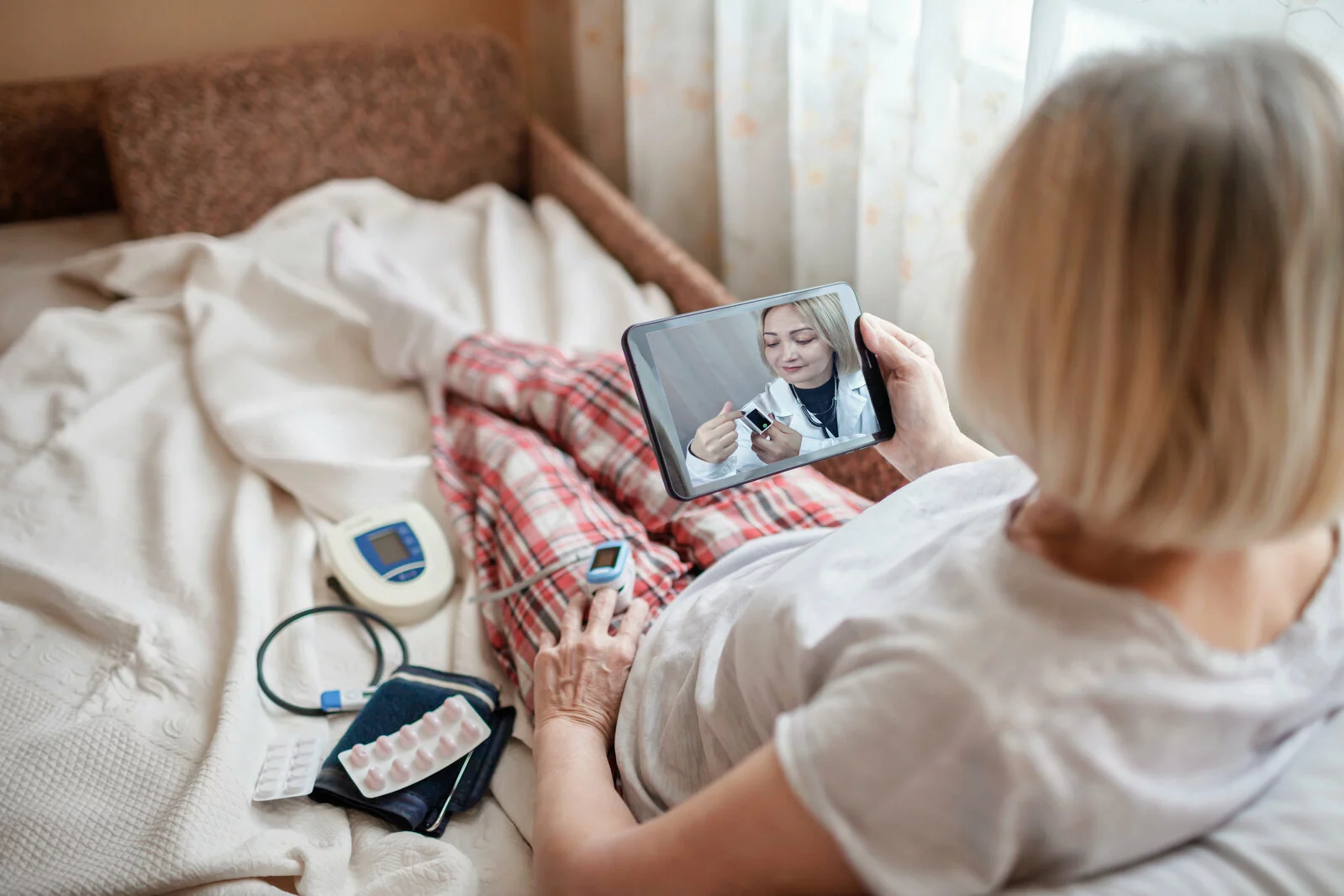Deploying Digital Health Infrastructure to Bring Hospice Care to Rural Patients
Interoperable, coordinated digital health infrastructure can increase access to hospice care for rural patients and reduce provider burdens.
In rural areas of the Midwest, patients often live hours from the nearest healthcare facilities. Accessing care can require a significant investment in time and effort—resources that not all patients have at their disposal. This is especially true for people nearing the end of life. Frail seniors and other terminally ill patients can benefit enormously from palliative and hospice care, but only if these services are able to reach them.
At Transitions Care, serving Illinois, Indiana, Michigan, Pennsylvania and Ohio, the goal is to bring supportive care to patients instead of the other way around. With a combination of in-home visits, telehealth services, and specialist staffing in nursing homes and other facilities, Transitions Care makes it easier for rural patients to get the care they need for a peaceful passage.
“Quality care doesn’t stop as soon as curative options are exhausted,” said Rick Cantrell, Chief Operating Officer at Transitions Care. “Palliative patients deserve the best we can offer them as they make memories with their families and live their final days with dignity.
“Technology is becoming increasingly important in the way we connect these patients with high-value services, and it’s just as important to develop a coordinated, interoperable health IT infrastructure for these populations as for any other patient group.”
Building a data-driven network of insights around vulnerable patients
Transitions Care providers are unique in that they don’t have their own offices to serve as a centralized hub for their technology infrastructure. Instead, they typically operate as credentialed staff within other organizations, such as skilled nursing facilities (SNFs), or provide home-based visits.
That means working closely with multiple health IT systems in use at partner facilities, Cantrell explained.
“There are a lot of connections to make and maintain with other EMRs and care management systems,” he said. “We use master patient index (MPI) technology to achieve interoperability with the EMRs in the facilities we work with so we have insight into risk scores and diagnoses so we can make sure every patient is getting appropriate care.
“When something changes in our partners’ EMRs, our providers get automatic notifications in our own systems so they can follow up quickly. For care management, we use a platform from TimeDoc that integrates well with our EMRs and helps our clinicians track and automate the care they’re providing.”
With this multi-system strategy, providers can record virtual visits and care management interactions from patients, automatically transcribe those interactions, and integrate key data elements into the EMR to reduce documentation time and improve awareness of new events.
“Our providers are often traveling around their home regions and may share patients with other clinicians,” Cantrell noted. “We use a geomapping system that matches the closest provider with the closest patients to minimize drive time in some of these more remote areas. So, it’s critical to ensure that everyone is informed and can contribute easily to the patient’s record.”
For patients receiving care in their homes, additional remote monitoring tools allow clinicians to stay in touch with individuals and their caregivers around the clock.
“We just launched ‘Transitions Care Television,’ which allows us to connect to people remotely in their homes,” he said. “We currently have seven modalities that we monitor through Bluetooth devices which get logged in our EMR, so we’re getting live data on patients to support their care. Our next big project is building out what we’re calling ‘Transitions Care Television’ and adding more remote monitoring technologies so we can create smart homes for our patients.”
Surrounding patients with a new generation of sensors and technologies can help people maintain their independence for longer and avoid a disruptive admission to a hospital or SNF, Cantrell said. Creating a smart home environment could also reduce burdens on caregivers, who are often anxious about leaving seriously ill patients in their homes without constant supervision.
“Remote monitoring tools can alleviate so many of those worries,” Cantrell said. “Let’s say someone turned on a light switch at 3am in the bathroom, and that light switch never goes off again. We should know about that, because there’s a chance that person took a fall and isn’t able to call for help. We should know if they turned on the stove and left it on for a few hours, because that’s clearly dangerous. We want to be able to call them and ask what’s going on. We might even be able to turn it off remotely for them.
“Those are the things that go above and beyond traditional clinical care, but are so important for elderly and frail individuals, particularly if they live in isolated communities where it’s difficult to get a family member or caregiver out there to help them around the clock.”
Strategies for choosing and implementing complex health IT infrastructure
With so many moving pieces, a decentralized organization like Transitions Care could easily get lost in a tangle of siloed data and poorly integrated systems. But a structured, stakeholder-driven approach to choosing and deploying health IT tools has made the group’s technical journey a success rather than otherwise.
Developing workflows with a closed feedback loop is critical, especially when working very closely with external systems and providers.
“You have to start by building a model on paper and detailing all of the pathways of communication that you need to be successful with your patient care,” Cantrell advised. “Most organizations aren’t going to be able to tackle everything all at once, so it’s just as important to prioritize the most high-impact projects, but with an eye toward how those functions are going to work well with future initiatives.
“It’s also important to get as many perspectives as possible at the table. I’m not the expert on everything. I need to hear from the physicians, the NPs, the schedulers, the revenue cycle folks—even patient representatives. Without all of that input and genuine engagement, you’re never going to get a new technology off the ground within the organization.”
With meaningful and valuable insights from across the enterprise, organizations can then start to explore specific technology partners that best meet their needs.
“When you think about adopting a new technology, you have to ask how it’s going to make it simpler for clinicians to deliver care. And how is that, in turn, going to improve the patient experience? Poorly integrated, difficult to use technologies aren’t going to give you good answers to those questions.”
“Once you build the framework, you can start looking at systems that will help you accomplish your goals. Don’t get tempted to do it the other way around,” he cautioned. “There are companies out there that sound very attractive and offer a lot of interesting technologies, but they’re not going to be a good investment if they don’t map directly back to how your organization works and what your specific objectives are. Stay focused on your goals and you’ll be able to pick partners who can help you drive better care for your patients and better experiences across the board.”

